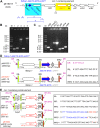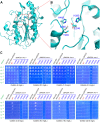Dissemination and Mechanism for the MCR-1 Colistin Resistance
- PMID: 27893854
- PMCID: PMC5125707
- DOI: 10.1371/journal.ppat.1005957
Dissemination and Mechanism for the MCR-1 Colistin Resistance
Abstract
Polymyxins are the last line of defense against lethal infections caused by multidrug resistant Gram-negative pathogens. Very recently, the use of polymyxins has been greatly challenged by the emergence of the plasmid-borne mobile colistin resistance gene (mcr-1). However, the mechanistic aspects of the MCR-1 colistin resistance are still poorly understood. Here we report the comparative genomics of two new mcr-1-harbouring plasmids isolated from the human gut microbiota, highlighting the diversity in plasmid transfer of the mcr-1 gene. Further genetic dissection delineated that both the trans-membrane region and a substrate-binding motif are required for the MCR-1-mediated colistin resistance. The soluble form of the membrane protein MCR-1 was successfully prepared and verified. Phylogenetic analyses revealed that MCR-1 is highly homologous to its counterpart PEA lipid A transferase in Paenibacili, a known producer of polymyxins. The fact that the plasmid-borne MCR-1 is placed in a subclade neighboring the chromosome-encoded colistin-resistant Neisseria LptA (EptA) potentially implies parallel evolutionary paths for the two genes. In conclusion, our finding provids a first glimpse of mechanism for the MCR-1-mediated colistin resistance.
Conflict of interest statement
The authors have declared that no competing interests exist.
Figures





References
MeSH terms
Substances
LinkOut - more resources
Full Text Sources
Other Literature Sources
Medical

